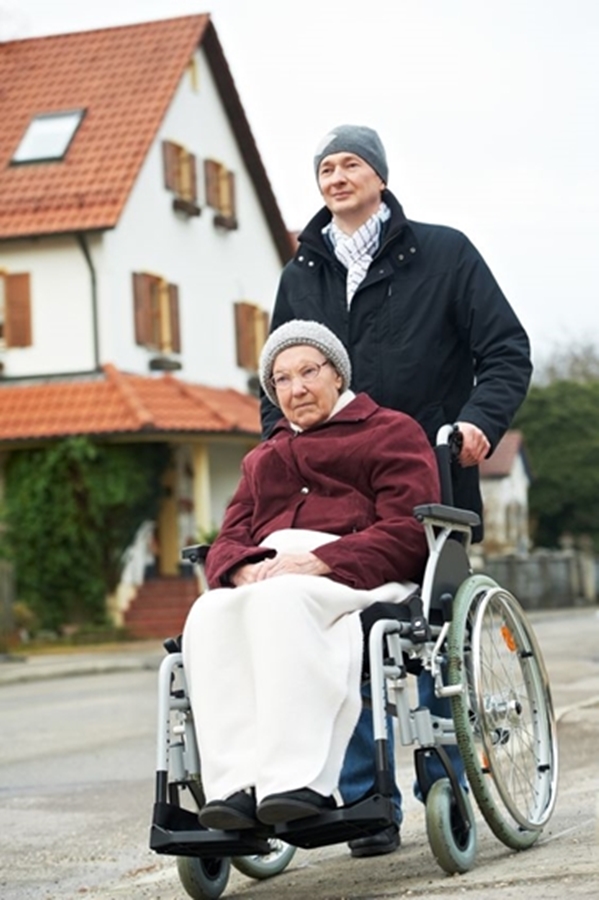How Prepared Were You When You First Became a Caregiver?
Did you know what to do, where to go, and what the medical terms being used even meant?
Did you know how and when to switch between spouse/child/sibling/friend/parent/partner and caregiver?
Didn’t Plan to Become a Caregiver
If you are like most caregivers, you probably didn’t. Most of us didn’t plan on becoming caregivers. We acquired the role because “something” happened to someone we loved or were responsible for protecting. We did not apply for the job. It did not matter if we had prior training competency or skill in knowing what to do. In some cases, it didn’t matter if we wanted to do the job since we were legally obligated under a court-appointed mandate. We had the responsibility to be the caregiver, training or not, to care for and protect this person placed under our responsibility. How could someone help while feeling overwhelmed and uncertain at the same time?
The daily challenges of 24/7 responsibilities without relief or a solution seem overwhelming. The caregiver is pulled in so many directions that life becomes out of focus, and life is lived from one crisis to the next with survival as a goal.
When Was Your Moment? The One You Became a Caregiver?
Do you know when your life changed and you became a caregiver? Perhaps the “moment” occurred suddenly through an accident or following a major complication of an illness. Rather than a “moment,” was the transition to caregiver a process that evolved over time as you assumed more and more responsibility for someone else’s life daily until you managed it all one day? Or was joy turned into fear when your world turned upside down as a new baby arrived three months early, along with an endless list of medical conditions you couldn’t pronounce? Over 43 million people in the United States experienced one of those “moments,” leading them to accept the call to be an unpaid caregiver for a family member in 2015. I would guess that number would be much higher now.
Forty-three million caregivers care for someone who cannot care for themselves. Think about it…Think of how much those people save the government by caring for their family members. Think of how many more hospitals and healthcare providers would be needed to care if these angels were absent. Knowing how much help they provide and how much they save the country in resources, they should be able to get help to do what they do, but sadly, that is not the case. The most struggle for any assistance provided at all.
Figure 1: Estimates of Individual Caregiving Prevalence by Age of Recipient
Type of Recipient | Prevalence | Estimated Number of Caregivers |
Overall | 18.2% | 43.5 million |
Only child recipients | 1.6% | 3.7 million |
Only adult recipients | 13.9% | 33.3 million |
Both adult and child recipients | 2.7% | 6.5 million |
Most new caregivers learn their jobs by trial and error. If a family member was recently hospitalized, the caregiver may have been shown how to do wound care or other procedures at least once before discharge and given a copy of printed instructions. If home health nursing gets approved, a nurse checks in with the family after discharge to review those instructions and ask if the family needs help with anything. Besides those resources, doctors and nurses tell the family at medical appointments what they need to know or provide brochures during appointments with information about the medical condition and how to get more information. In today’s environment, most information is gathered from the internet. Family members search the net for what they can find, hoping to locate reliable information that meets their needs and can answer questions they may not know to ask. Often, the search leaves them frustrated and confused, still uncertain about what they need to do.
The Healthcare Industry Provides Minimal Support
One of the greatest failures in our healthcare industry is the failure to support the family caregiver. A tragedy occurs. A significant other is grateful for the miracle survival of their loved one. Financial resources are limited. The patient improved and discharge approaches. Nurses show the family how to make dressing changes. They talk about cleanliness and what if this happens or that. Instructions are written down. Plans are made, and the patient is discharged home. Orders are written for home health, which means maybe a one-hour visit daily in rare cases or an hour visit 2-3 times per week to check on the patient’s status. The rest is up to the family.

The reality of being alone sets in about the time the family opens the front door of their home. Suddenly, they must figure out how to get this weak individual into their home, including climbing five steps and to their bedroom. After that comes how to handle body parts or dressings leaking in the bed, helping the patient to change positions in a king-size bed, and helping them down the hall to the bathroom when they can barely walk three feet. Following close behind is the question, “Which pills did she take today at the hospital, and which ones still need to be taken now that she’s home?” This discharge paper doesn’t say. Oh, and the pharmacy was closed when we came by this afternoon. Now I don’t have anyone to stay with Mom in the morning while I pick up her medication.”
Home Care Isn’t Like Hospital Care
When it’s time for the first dressing change, another reality hits home—they are not in a hospital where all the wound supplies are at hand’s reach. They need to set up a workstation for their supplies. Plus, they had forgotten how to do the sterile technique, and there was a new-looking spot on his butt that wasn’t there before. What do they do with that?
Due to physical exhaustion and lack of sleep, caregivers become overcome with emotion. Many wonder how they will find the energy to take another breath, much less provide another day of care.
No Role Models
New caregivers feel overwhelmed. Many feel sure they might cause more harm than good and fear careless mistakes might cause them to hurt their dad based on incorrect assumptions. They have no role models, no one to mimic or call for a quick “How did you handle this?” type of question. They feel isolated and alone. What’s worse is that if they complain, they may be criticized for not wanting to care for a parent or spouse and may appear seemingly ungrateful for years of prior care themselves. Thus, the new caregiver begins to feel not only insecure but isolated as well.
Over time, holding in these feelings leads to resentment, anger, frustration, depression, and, if care is needed for a long time, eventual compassion fatigue or caregiver burnout. In both situations, the caregiver’s own health and emotional well-being suffer. In many cases, the person receiving care often survives longer than the one providing the care because caregivers tend to neglect their own well-being to provide for the one under their responsibility instead.
Isolation and Despair
I hope to change the picture of isolation and despair, which is why I started this website. I have felt and still feel all those emotions at times. I know how you feel because I do what you do daily, and I want to help stop the hurt.
I am retired now and have someone who helps me during the day shift. I want to use that time when I have help to support those starting out. I hope to encourage those already in the role to continue their walk-through, working together to strengthen one another. If we all combine and share what we know, we can make a difference in our lives and each other’s. I’m willing to coordinate that process to help make that difference. I hope you will join me in making that difference.



